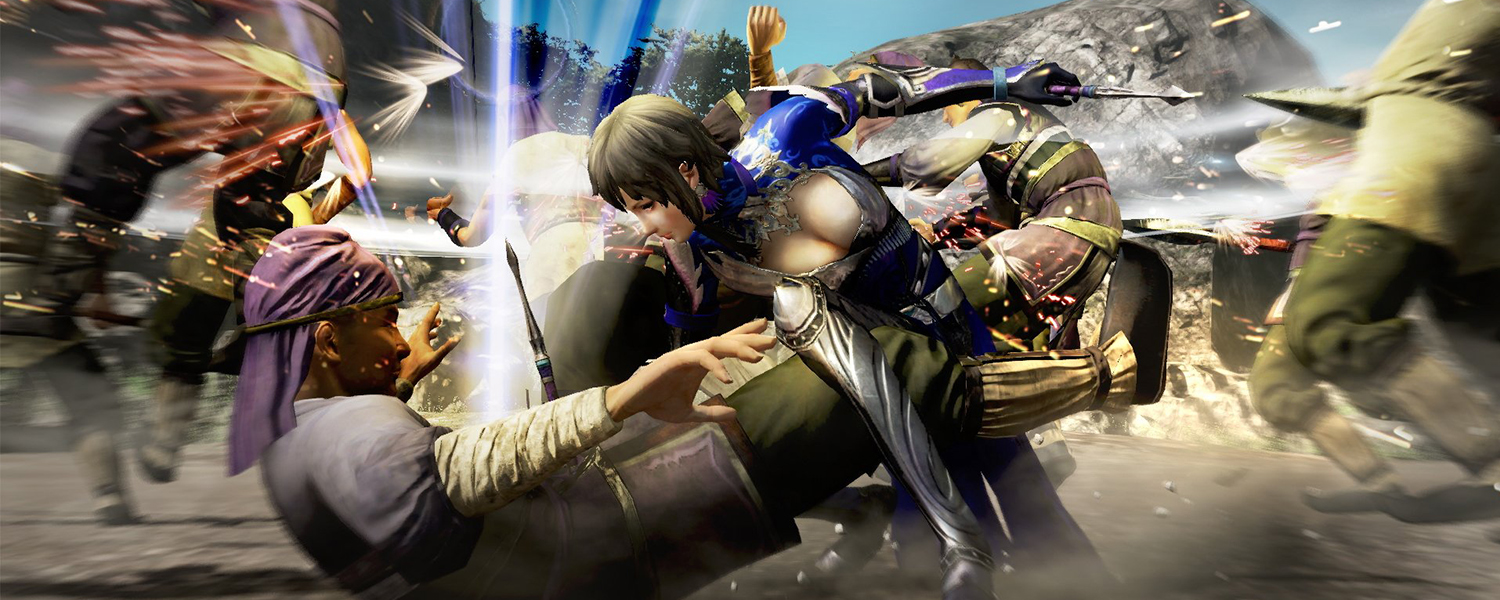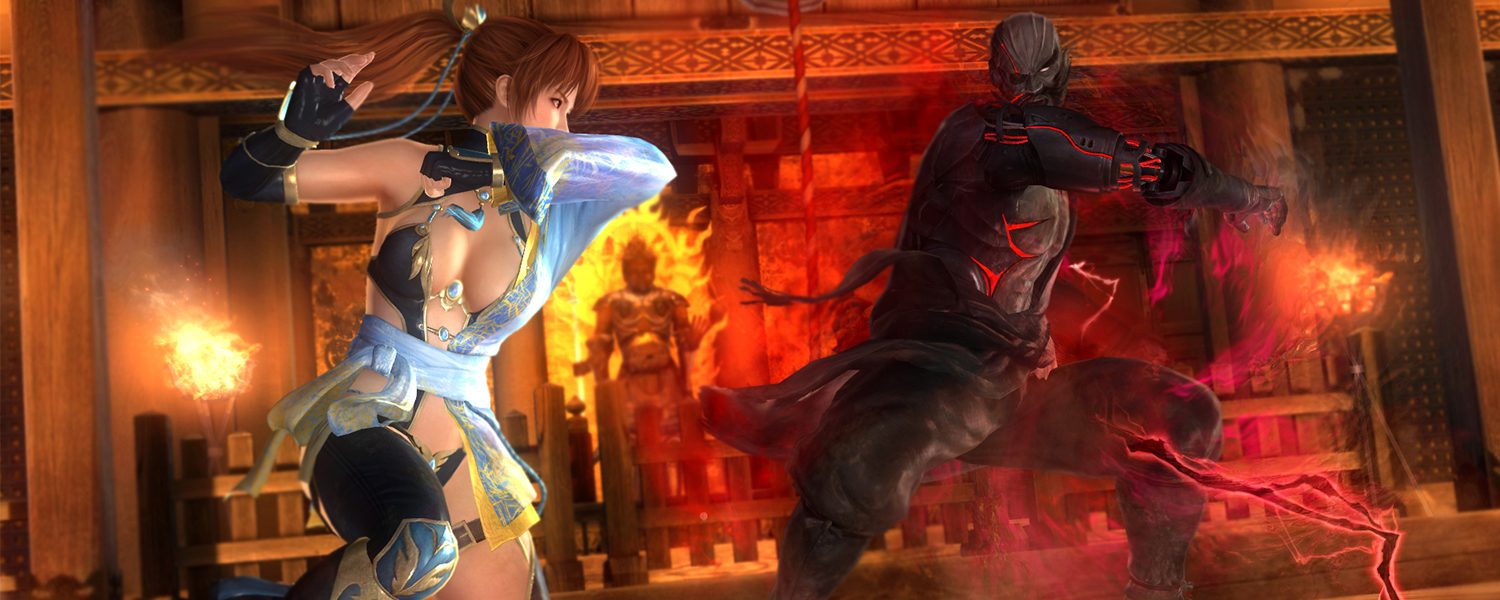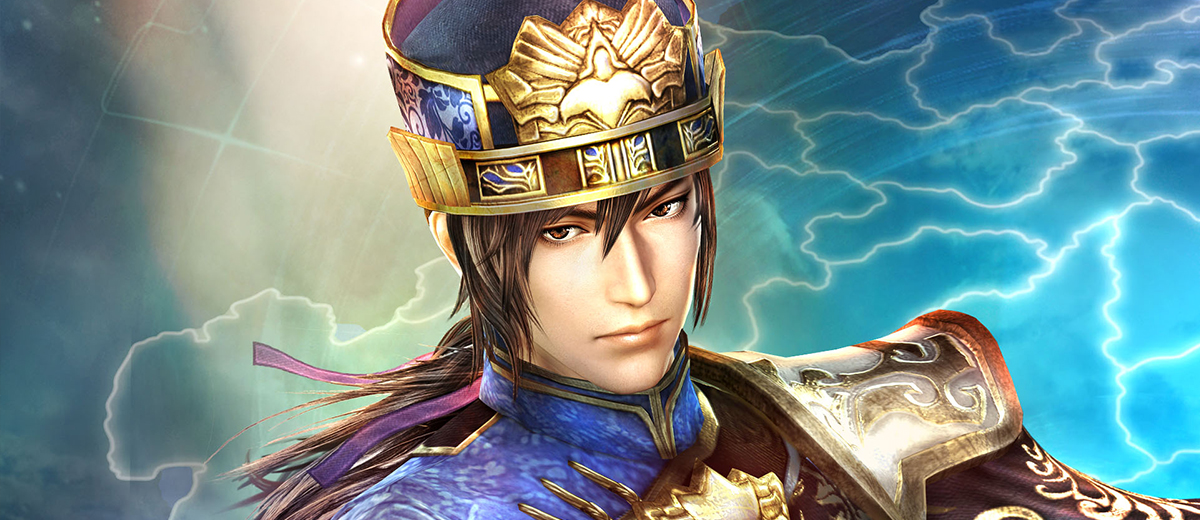 It could be said that three things in life are certain; death, taxes, and a new Dynasty Warriors title every year. A spin-off to the main series, Dynasty Warriors 8: Empires takes a different approach to the core gameplay, adding RTS elements to a primarily hack-and-slash series. Loosely (and I mean VERY loosely) based around Chinese history, Dynasty Warriors 8: Empires allows players to take control of legendary Chinese warriors and officers from history, and command them on a dynamic battlefield in order to achieve an objective. There is no major plot per se, more just a series of missions and control objectives based around events in history, focusing on the rise and fall of different empires in China, mixed with tactical recruitment and romance on the side. The player’s ultimate goal is to effectively control all of China, by invading and pacifying enemies and rivals, and maintaining rule over your own domain.
It could be said that three things in life are certain; death, taxes, and a new Dynasty Warriors title every year. A spin-off to the main series, Dynasty Warriors 8: Empires takes a different approach to the core gameplay, adding RTS elements to a primarily hack-and-slash series. Loosely (and I mean VERY loosely) based around Chinese history, Dynasty Warriors 8: Empires allows players to take control of legendary Chinese warriors and officers from history, and command them on a dynamic battlefield in order to achieve an objective. There is no major plot per se, more just a series of missions and control objectives based around events in history, focusing on the rise and fall of different empires in China, mixed with tactical recruitment and romance on the side. The player’s ultimate goal is to effectively control all of China, by invading and pacifying enemies and rivals, and maintaining rule over your own domain.
 The game builds off the previous title, Dynasty Warriors 8, which was initially released on last-gen consoles in 2013. This is evident in the graphical capabilities of the game; it looks vibrant, but on closer inspection textures aren’t as polished as they could be, and things have a glossy sheen to them at some points. To be fair, this only really impacts on the game when you are paying close attention, as the action sequences and general pace of the game will easily be a distracting force.
The game builds off the previous title, Dynasty Warriors 8, which was initially released on last-gen consoles in 2013. This is evident in the graphical capabilities of the game; it looks vibrant, but on closer inspection textures aren’t as polished as they could be, and things have a glossy sheen to them at some points. To be fair, this only really impacts on the game when you are paying close attention, as the action sequences and general pace of the game will easily be a distracting force.
Character models are otherwise quite detailed; with intricate patterns and designs on armour and clothing, and have quite a bit of motion in them, especially when it comes to battles. Capes flow and swing around with each slash of a sword, or dart with a spear. The detail is reserved mostly for main characters and officers, and the basic enemies fall under a generic model category, which to be fair is logical, since they are consistently being taken down. Attacks bring vibrant splashes of colour across the screen, from flaming slices and explosive crashes to magic and special moves.

The menu system feels like something out of a PS1 or PS2 game – heavy neon and squared options detract from the moments of actual gameplay, and can get quite tedious at times. This is accompanied by a soundtrack that gets quite repetitive and suffers from sounding similar all throughout, from menu to battle. The music is nothing to write home about either – a mix of generic action rock and orchestral scoring, with a bit of synth thrown in; all in all, something you would expect from this kind of game.
One of the most jarring things about the sound design is the fact that the voices seem to only be available in Japanese. This would almost be easily accepted if it were a Japanese-based game, but considering it focuses on Chinese lore, it occasionally takes the player out of the world that is being presented, and gives the game a generic Japanese feel overall.
 I’ve never been one to actively play a Dynasty Warriors title until now, so I’ll be the first to admit that I should have initially paid more attention to learning the processes; the downside of this is that the tutorials are less gameplay-based and more reading-focused, so it gets quite tedious.
I’ve never been one to actively play a Dynasty Warriors title until now, so I’ll be the first to admit that I should have initially paid more attention to learning the processes; the downside of this is that the tutorials are less gameplay-based and more reading-focused, so it gets quite tedious.
The game has two major aspects to it – politics and battle. The politics section takes place within a menu system, and functions as a means to rule over a territory. Players must construct facilities, conscript armies, and recruit and train warriors into officer roles in order to lead armies in battle. Three major resources fund your campaign; materials which are used to construct, train and host, money which is used to purchase goods and works in sync with materials, and units, which calculates how many men form your army. Through this mode, alliances can be formed with other regions, battles and raids can be initiated, and officers can be recruited to your ranks in order to grow your empire and become sole ruler of China.

To rule China, however, you need to be able to take and defend the lands you wish to own. This transition from menu-based politics into gameplay is where things get fun; playing the part of your character, you take to the battlefield to lead your troops to glory. Your other officers command units of men, but the player character becomes a one-man army. It is your job, on the battlefield, to not only send commands to your officers of whether to defend or attack, but also to charge headfirst into battle and take down hordes of enemy soldiers and rival officers. Every character has basic attacks, as well as powered attacks (known as Musou attacks), and the longer and more you fight, the bigger the Musou gauge gets. Other powers, known as ‘Stratagems’ can be activated by each individual officer, and can help change turn the tide of a battle; causing the sky to rain down with hellfire, constructing catapults or archery towers, or even upgrading one’s speed and attack to run around and obliterate squadrons in one single slash. The player can rack up massive combos and defeat in abundance of 1000s of men, all of which is continuously flashed on screen every time a milestone is reached. This raises the excitement a little and almost begins to lead to goals being set, and seeing if you can beat your personal best (I’m pretty sure mine was around 2000 men).
Victory is achieved in battle when certain circumstances are met, for instance defeating the enemy general, or capturing particular bases across the map by defeating the occupants inside. Once these battles are over though, it’s back to the menus for another average round of politics.
Each side of the game goes hand in hand with the other – if a territory is attacking yours, it is up to you to defend it or you will lose it. To keep your officers happy and to grow your campaign, territories must be invaded and more men trained in order to account for any that are lost. The political side may sound boring, but after a while you tend to fall into a pattern and get used to it.

If your lands are attacked, and you are defeated, you become a ‘Free Officer’, and have the decision of serving under a General, or starting a Vagabond unit and recruiting on your own. This can be used to your advantage in order to rebuild an empire that you may have once lost, or to take one down from the inside.
One major gripe I had with the game overall is the fact that a lot of the processes can be extremely time-consuming; as half of the game is based around the politics, the action takes a back seat and things may not happen for a while. If you go out and attack too quickly, you can lose what you have accumulated in an instant, and if you take your time to build up an empire, it can be invaded consistently until you have nothing left. Some points of the game became a drag because of this, as the battles became few and far-between.



